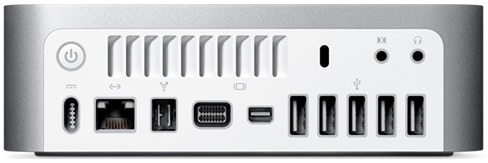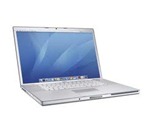iPod Shuffle: January 11, 2005
 While Apple’s line of iPods was one of the first projects Jobs tackled after becoming the company’s full-time CEO once again in 2000, the iPod Shuffle was the first to break the $100 barrier. Jobs pitched it as “smaller and lighter than a pack of gum.”
While Apple’s line of iPods was one of the first projects Jobs tackled after becoming the company’s full-time CEO once again in 2000, the iPod Shuffle was the first to break the $100 barrier. Jobs pitched it as “smaller and lighter than a pack of gum.”
Even at $99, the Shuffle was expensive for what it actually did from a technical standpoint. People still bought it, though; its $99 price tag was part MP3 player, part admission to Apple’s world of portable music.
Mac Mini: January 11, 2005

Apple’s unbelievably tiny Mac Mini was unveiled in 2005 with an even more unbelievably tiny price tag—for an Apple product, at least: $499. The apparent aim of the Mini was to lure PC users into seeing what all the fruit-themed hubbub was about. The computer shipped without a keyboard or mouse, but its diminutive 6.5″ x 6.5″ x 2″ frame was charismatic enough that nobody really cared. I still remember marveling at its innards after using a putty knife to pry mine open so I could install some more memory.
iPod Nano: September 7, 2005
 Sticking to the small-is-the-new-large theme the iPod Shuffle and Mac Mini had perpetuated throughout the year, Apple rolled out the iPod Nano in September.
Sticking to the small-is-the-new-large theme the iPod Shuffle and Mac Mini had perpetuated throughout the year, Apple rolled out the iPod Nano in September.
The Nano’s selling point: a “full-featured iPod that holds 1,000 songs yet is thinner than a standard #2 pencil.”
iPod Video: October 12, 2005
 The fifth-generation iPod unveiled in October of 2005 was the first to feature video playback and represented Apple’s second full redesign of the product. The result was a slimmer case and a larger 320×240-resolution color screen.
The fifth-generation iPod unveiled in October of 2005 was the first to feature video playback and represented Apple’s second full redesign of the product. The result was a slimmer case and a larger 320×240-resolution color screen.
Several additional iterations of the iPod Classic, Nano and Shuffle would make their way to market throughout the ensuing years as well.
MacBook Pro with Intel: January 10, 2006
 Apple’s 2006 MacBook Pro line was the first model to use Intel chips, replacing the PowerBook G4 line. Apple claimed Intel’s processor delivered four times the performance of the old PowerBook’s G4 chip; the new design featured an aluminum shell, measured an inch thick, and tipped the scales at just over five-and-a-half pounds. The consumer-focused, Intel-based, non-Pro MacBooks debuted in May of the same year, too, followed by the infusion of Intel processors into all of Apple’s computers that would roll out thereafter.
Apple’s 2006 MacBook Pro line was the first model to use Intel chips, replacing the PowerBook G4 line. Apple claimed Intel’s processor delivered four times the performance of the old PowerBook’s G4 chip; the new design featured an aluminum shell, measured an inch thick, and tipped the scales at just over five-and-a-half pounds. The consumer-focused, Intel-based, non-Pro MacBooks debuted in May of the same year, too, followed by the infusion of Intel processors into all of Apple’s computers that would roll out thereafter.
article continues on the next page…

